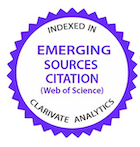Consumo de vitelo durante o desenvolvimento embrionário de melanotênia-maçã, Glossolepis incisus, Weber 1907 (Melanotaeniidae)
Palavras-chave:
Peixe ornamental, ontogenia, Desenvolvimento inicial.Resumo
Avaliou-se o consumo do vitelo durante o desenvolvimento embrionário de melanotênia-maçã (Glossolepis incisus) sob condições controladas de incubação. Os ovos foram obtidos por desovas naturais de matrizes em cativeiro e mantidos em peneiras em aquários de 40L, com fluxo contínuo de água por bombeamento, na temperatura de 28°C. O fotoperíodo mantido durante o experimento foi de 16L:8E. Os embriões demonstraram um longo período de incubação, em torno de sete dias, e consumiram quase todo o vitelo durante o período embrionário, ainda dentro dos ovos. Após a eclosão, a vesícula vitelínica das larvas recém-eclodidas é muito reduzida, mas ainda presente. As larvas recém-eclodidas apresentaram muita atividade natatória, uma boca funcional, movimentos peristálticos entéricos e ânus aberto sugerindo estar em fase inicial de alimentação exógena. Diferentemente de outras espécies de peixes tropicais que possuem um longo período de tempo para a transição alimentar, as larvas de melanotênia-maçã estão prontas para a alimentação exógena em poucas horas após a eclosão.
PALAVRAS-CHAVES: Desenvolvimento inicial, ontogenia, peixe ornamental.
Downloads
Publicado
Como Citar
Edição
Seção
Licença
Copyright (c) 2009 Ciência Animal Brasileira / Brazilian Animal Science

Este trabalho está licenciado sob uma licença Creative Commons Attribution 4.0 International License.
Autores que publicam nesta revista concordam com os seguintes termos:
- Autores mantém os direitos autorais e concedem à revista o direito de primeira publicação, com o trabalho simultaneamente licenciado sob a Licença Creative Commons Attribution que permite o compartilhamento do trabalho com reconhecimento da autoria e publicação inicial nesta revista.
- Autores têm autorização para assumir contratos adicionais separadamente, para distribuição não-exclusiva da versão do trabalho publicada nesta revista (ex.: publicar em repositório institucional ou como capítulo de livro), com reconhecimento de autoria e publicação inicial nesta revista.
- Autores têm permissão e são estimulados a publicar e distribuir seu trabalho online (ex.: em repositórios institucionais ou na sua página pessoal) a qualquer ponto antes ou durante o processo editorial, já que isso pode gerar alterações produtivas, bem como aumentar o impacto e a citação do trabalho publicado (Veja O Efeito do Acesso Livre).


























